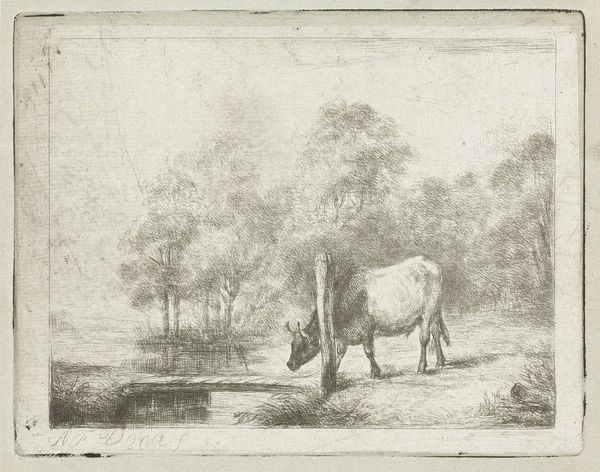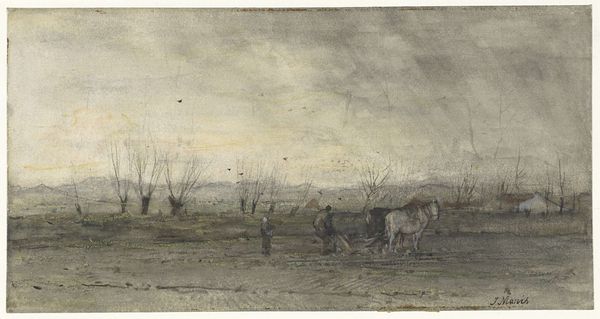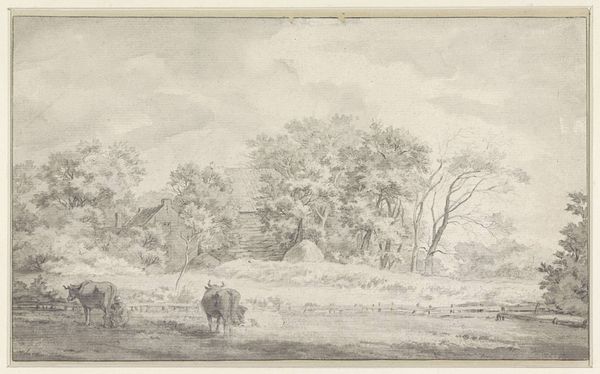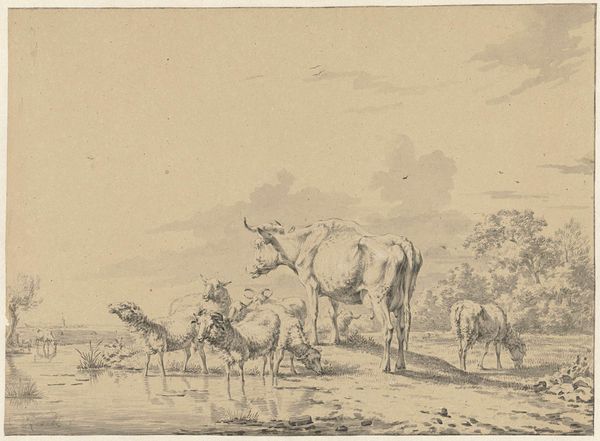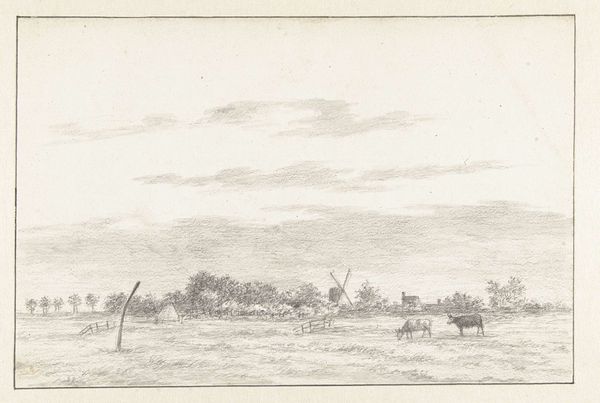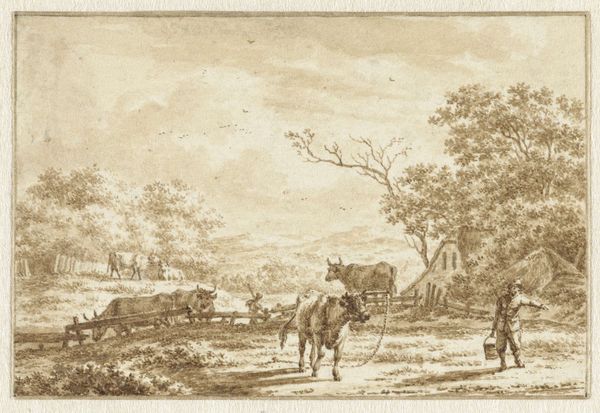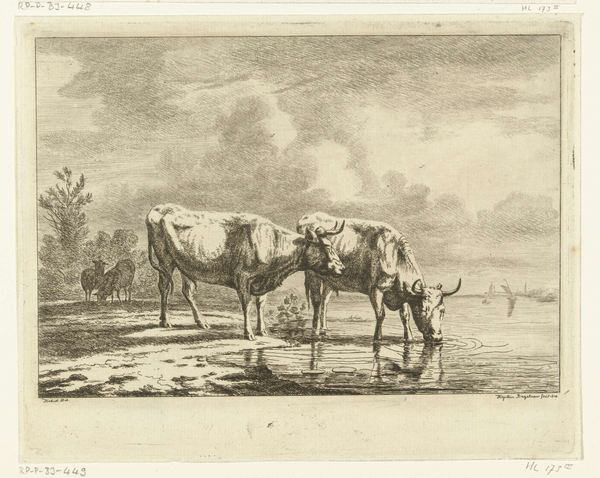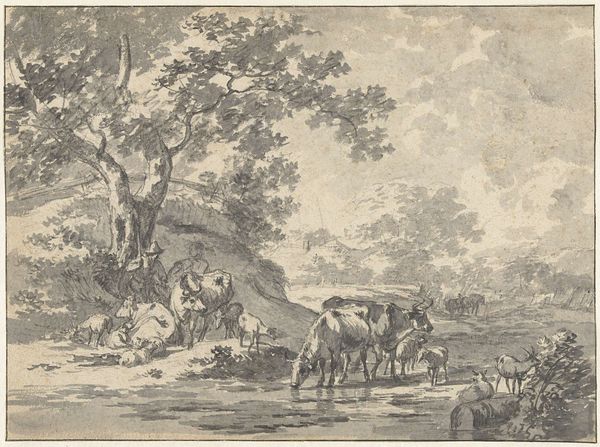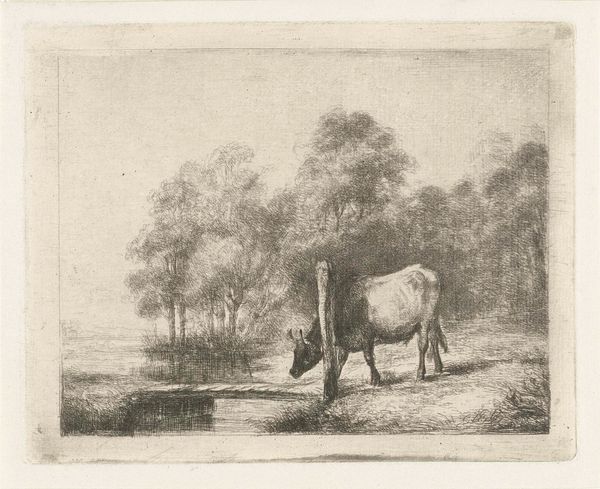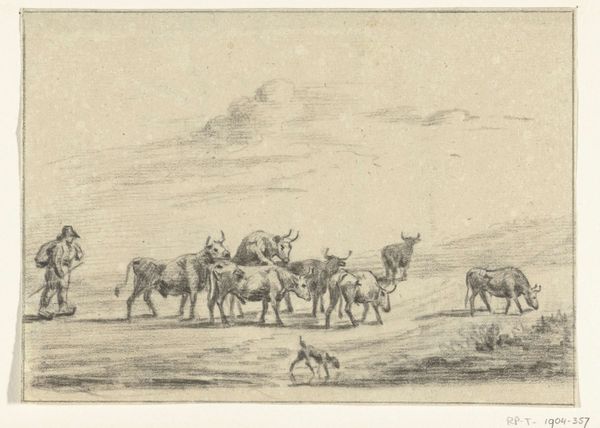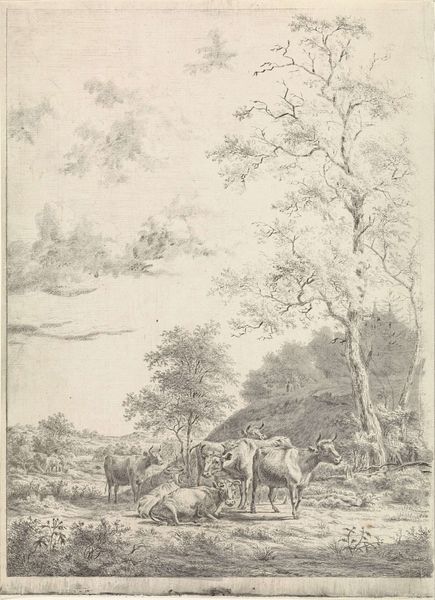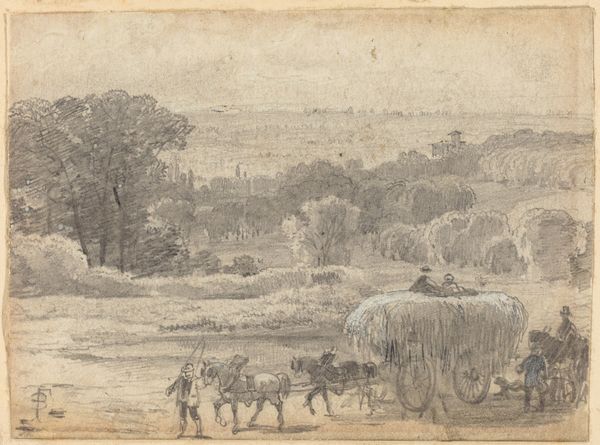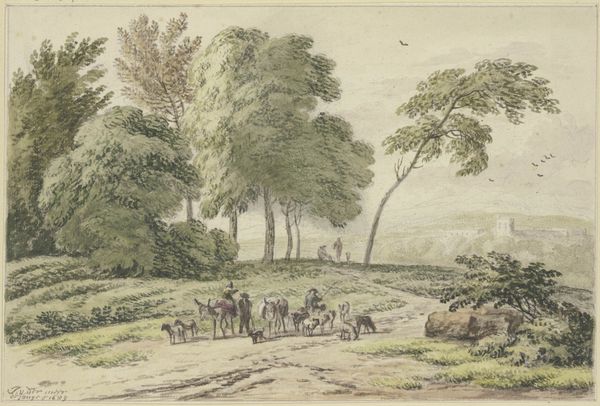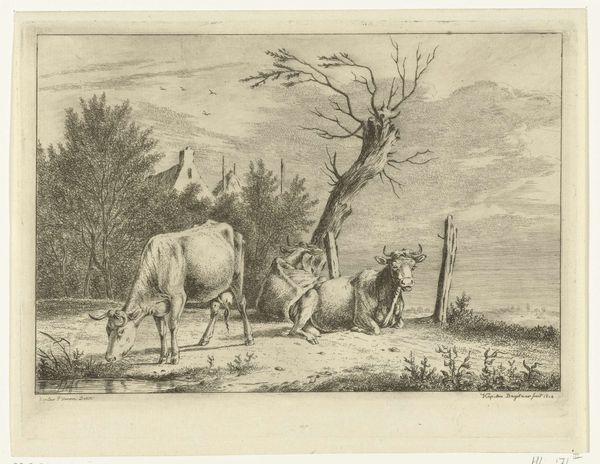
drawing, pencil, charcoal
#
drawing
#
impressionism
#
pencil sketch
#
landscape
#
pencil
#
genre-painting
#
charcoal
#
realism
Dimensions: height 109 mm, width 306 mm
Copyright: Rijks Museum: Open Domain
Curator: Anton Mauve created "Cows in the Evening," sometime between 1848 and 1888. It's a drawing here at the Rijksmuseum, made with pencil and charcoal. It strikes me immediately how tactile those materials seem in rendering this simple scene. Editor: The first thing that strikes me is how desolate and somber the artwork feels. It reminds me of those 19th-century agricultural practices which relied on human and animal labor, depicting an unending cycle, maybe oppressive to both human and animal. Curator: Yes, let's unpack that. The visible strokes and smudges showcase Mauve's working process, and his choice of such ordinary subject matter —cows and a lone figure in a field — situates this piece within a larger artistic trend towards Realism, which often championed the depiction of everyday life and labor, so, the human and animal labor would make sense here. Editor: And who is included and who isn't—peasants as well as women working the fields at the time period would rarely appear in artwork outside their roles and the narrative or symbolism that these represent. Curator: Exactly. Mauve's emphasis on materiality could be read as a democratizing gesture, shifting away from traditional high art towards an appreciation of the raw, unadorned materials that many everyday objects are made from. This work definitely suggests an intimate relationship between the artist, the materials, and the landscape. What do you make of the atmospheric effect achieved with just pencil and charcoal? Editor: I think it underscores the relentless cycle. The somber tone amplifies that feeling, of a social realism tinged with melancholy because while Mauve focuses on the real he can not, of course, overlook issues of social inequalities. It evokes the challenges and hard labour. Curator: Mauve's attention to these cows reflects a society undergoing huge shifts, and he draws attention to their labor, while also using visible strokes and simple rendering techniques, suggesting an awareness of class. The lack of idealization perhaps makes us reflect on the economic changes that affected both humans and animals, as labour turned to commodities. Editor: Absolutely. This drawing then speaks volumes about the transition to an industrial agricultural system, reminding us of what got lost in the process, by simply highlighting the labour of cows. Curator: It does indeed provoke reflection. Editor: A somber meditation on labor.
Comments
No comments
Be the first to comment and join the conversation on the ultimate creative platform.
